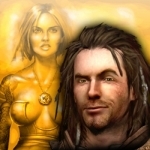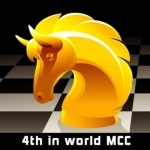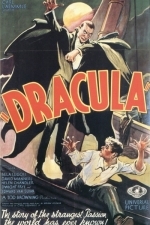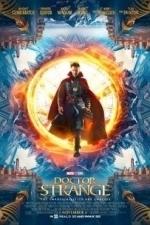
The Bard's Tale
Games and Entertainment
App
#1 RPG in 75 countries, including USA, UK, Australia, Canada, France, Germany, Italy, Spain, Russia,...

My Bakery Empire
Games and Entertainment
App
~~> Help Lizzie open up world-famous bakeries and take specific orders from her demanding customers!...

Best Fiends
Games
App
Over 70,000,000 people are already playing! Get the top rated puzzle adventure FREE! Enter the world...

NAVIGON USA
Navigation and Travel
App
Whether on holiday, taking a weekend trip or heading off somewhere as yet unfamiliar – with...

Drift Mania Championship Lite
Games and Sports
App
With MILLIONS of users, Drift Mania is a MUST-HAVE for any car enthusiasts! Join the revolution and...

Bus Times London
Navigation and Travel
App
Bus Times London is the ultimate travel app. Check TfL bus times to see if yours is running late,...

Chess Pro with Coach - Learn,Play & Online Friends
Games and Entertainment
App
Mastersoft Chess has one of the World's best Desktop PC chess engines crammed inside! It will...

Magic Window - Living Pictures
Health & Fitness and Lifestyle
App
Turn your iPhone or iPad into a window with a million dollar view. Enjoy beautiful timelapse views...
RəX Regent (349 KP) rated Dracula (English) (1931) in Movies
Mar 7, 2019
Tod Browning was a man who would unfortunately find little success in the sound era, but not necessarily because he couldn't move with the times, but because his career was derailed a couple of years later by his disturbing horror pic, Freaks.
Dracula was shot THREE times. One, this one, was the conventional sound version that we all know. An other was shot at night and in Spanish for the benefit of that audience, which the studio supposedly preferred. This was quite common at this time, but little known nowadays. And the third was a straight forward silent version for the many theatres still un-equipped to handle sound.
But the styles of the silent era are all over this film. From the long silent reactions shots and the over acting, especially by Bela Lagosi in the titular role. This was also the adaptation of the stage adaptation of Bram Stoker's chiller, and was faithfully adapted from that source, hence the lack of more complex special effects, with bats on strings and fog machines, over more cinematic effects.
The transformation scenes for example, where the Count morphs from a bat to the undead human occur off-screen, rather than some form of cross fade etc. Is this a choice driven by lack of money? Lack of cinematic ambition of a choice to stick to the stage material? To be honest, I have too little knowledge or experience of Tod Browning's work to suggest a reason, but when all's said and done, it did work.
Let's be honest, this is 80 years old and is not the least bit scary and it is hard not to laugh, but in context, I'm sure it worked well at the time and the story is well conveyed. Lagosi's undead performance is hammy by today's standards but he was somewhat likable. He was very deliberate, slow and the silent era has certainly left its scars, as the subtly of sound performing was yet to take hold.
But this is the sort of film were silent melodramatic acting still worked. This is of course a piece Gothic Horror, the home of melodrama if ever there was one. This is surly a product of its time, both as the industry went through one of it's most dramatic changes, which ended so many careers as well a created so many new ones, but it's also, let's not forget, the first direct adaptation of Bram Stoker's book, besides the 1922 German version, Nosferatu, which changes a fair few details to try to get around the copyright, failing to do so mind, resulting in failed bid to have every copy of the film destroyed.
This is the film that ingrained the image of the Dracula that we know today into popular culture. This was were the Universal horror franchise began. For whatever faults it has by today's standards, it did something right.
Movie Metropolis (309 KP) rated Doctor Strange (2016) in Movies
Jun 10, 2019 (Updated Jun 11, 2019)
Now, one of the biggest film studios in the world takes on its biggest gamble yet – more so than Guardians of the Galaxy was, and that’s saying something! But does Doctor Strange hit all the right notes or are we looking at Marvel’s first true dog’s dinner?
Dr. Stephen Strange’s (Benedict Cumberbatch) life changes after a car accident robs him of the use of his hands. When traditional medicine fails him, he looks for healing, and hope, in a mysterious enclave. He quickly learns that the enclave is at the front line of a battle against unseen dark forces bent on destroying reality. Before long, Strange is forced to choose between his life of fortune and status or leave it all behind to defend the world as the most powerful sorcerer in existence.
Harry Potter meets Inception as director Scott Derrickson’s ambitious vision for the Marvel comic comes to life on screen. It’s one of the best looking films in the studio’s catalogue, and one that’s definitely worth paying the extra dosh for the 3D version.
When it comes to acting, the cast is, on the whole, very good. Tilda Swinton is perhaps the best character in the entire film as the ‘Ancient One’. She’s an incredible actress given the right material and despite being thinly written, she shines in this intriguing role. The rest of the cast, including Benedict Wong, Chiwetel Ejiofor and Rachel McAdams are poorly realised and make no measurable impact on the final cut.
Mads Mikkelsen’s portrayal of Kaecilius, the film’s main antagonist, is good but Marvel continuously struggle to create interesting villains and unfortunately, Mikkelsen falls into that pot, though he’s not quite as bad as Oscar Issac’s Apocalypse from this year’s X-Men entry. Let’s hope Mikkelsen is given more time to shine in Rogue One: A Star Wars Story in December.
Assessing Benedict Cumberbatch’s performance as the titular character is a little more difficult. On the one hand, he plays the deeply unlikeable Stephen Strange with the same class he brings to all his other personas; and then on the other, he seems at odds with Marvel’s global universe – the comedic elements almost feeling a little too forced, that is, in comparison to Chris Hemsworth’s mighty Thor or Paul Rudd’s sarcastic Ant-Man.
Luckily, the engaging special effects and magical story ensure Doctor Strange’s negatives are kept few and far between. Superhero films are beginning to grow a little tiresome with at least six being released this year alone, but the unique plot to this one makes certain you won’t have seen anything like it in the genre before.
Overall, Doctor Strange is a pleasing addition to the MCU, though one that isn’t quite as special as Guardians of the Galaxy was in 2014. It’s nice to have yet another character to join the growing list of Avengers but it’ll take another solo outing for Benedict Cumberbatch’s surgeon to make any sort of lasting impact.
https://moviemetropolis.net/2016/10/27/marvel-meets-inception-doctor-strange-review/

